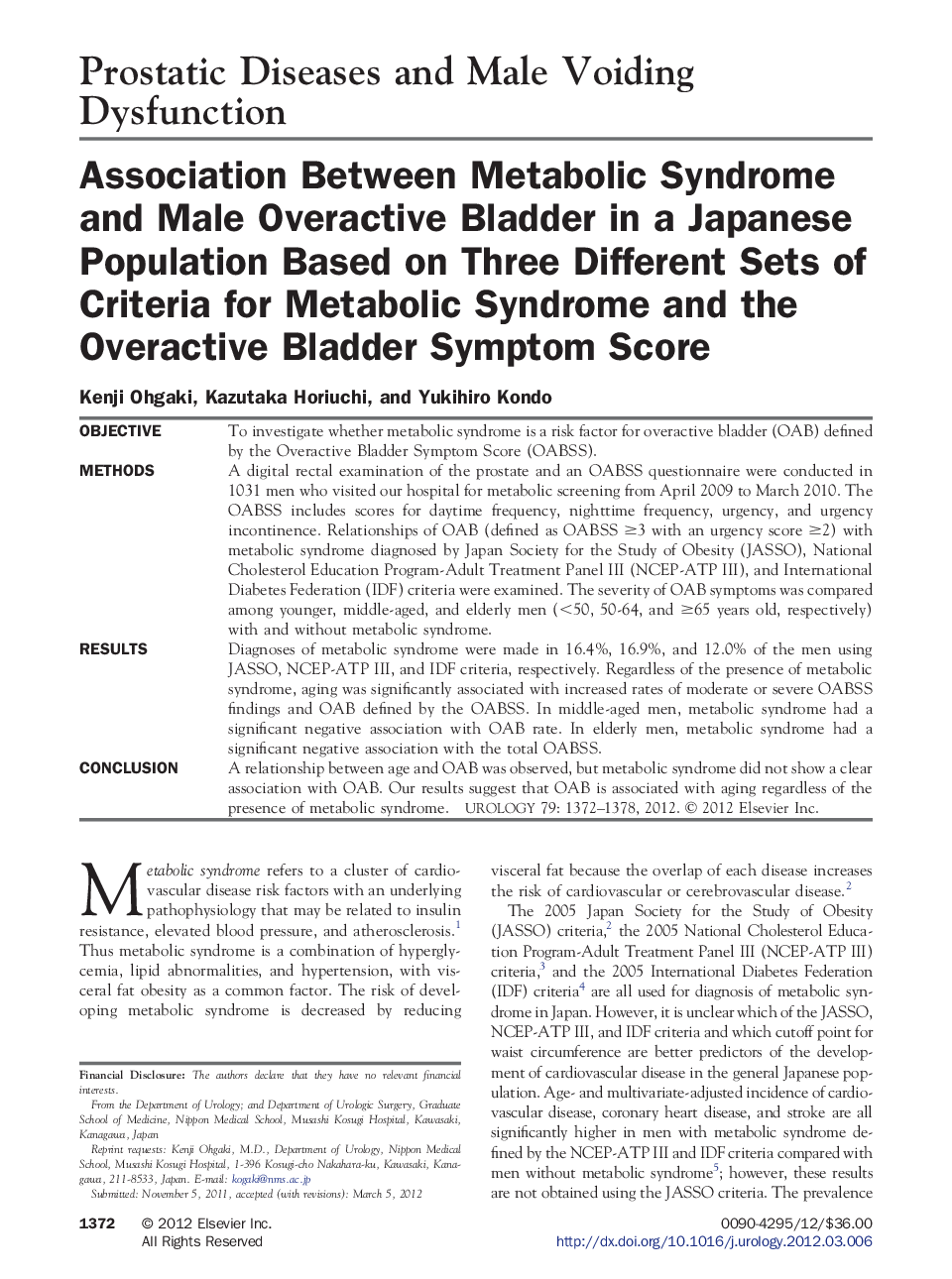| Article ID | Journal | Published Year | Pages | File Type |
|---|---|---|---|---|
| 3900182 | Urology | 2012 | 7 Pages |
ObjectiveTo investigate whether metabolic syndrome is a risk factor for overactive bladder (OAB) defined by the Overactive Bladder Symptom Score (OABSS).MethodsA digital rectal examination of the prostate and an OABSS questionnaire were conducted in 1031 men who visited our hospital for metabolic screening from April 2009 to March 2010. The OABSS includes scores for daytime frequency, nighttime frequency, urgency, and urgency incontinence. Relationships of OAB (defined as OABSS ≥3 with an urgency score ≥2) with metabolic syndrome diagnosed by Japan Society for the Study of Obesity (JASSO), National Cholesterol Education Program-Adult Treatment Panel III (NCEP-ATP III), and International Diabetes Federation (IDF) criteria were examined. The severity of OAB symptoms was compared among younger, middle-aged, and elderly men (<50, 50-64, and ≥65 years old, respectively) with and without metabolic syndrome.ResultsDiagnoses of metabolic syndrome were made in 16.4%, 16.9%, and 12.0% of the men using JASSO, NCEP-ATP III, and IDF criteria, respectively. Regardless of the presence of metabolic syndrome, aging was significantly associated with increased rates of moderate or severe OABSS findings and OAB defined by the OABSS. In middle-aged men, metabolic syndrome had a significant negative association with OAB rate. In elderly men, metabolic syndrome had a significant negative association with the total OABSS.ConclusionA relationship between age and OAB was observed, but metabolic syndrome did not show a clear association with OAB. Our results suggest that OAB is associated with aging regardless of the presence of metabolic syndrome.
